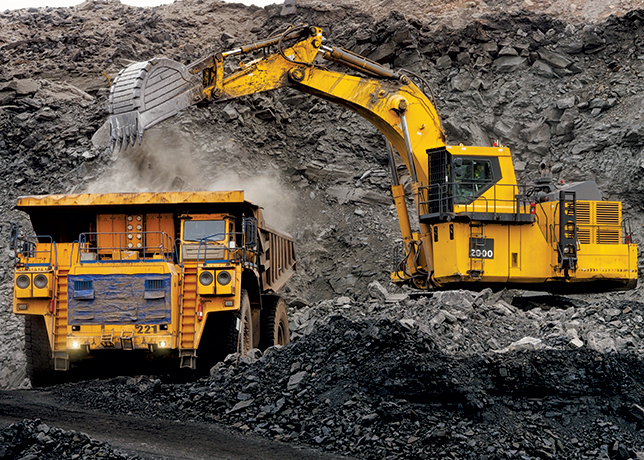
 The world needs 55 per cent more new copper mines to electrify the global vehicle fleet
The world needs 55 per cent more new copper mines to electrify the global vehicle fleet
The green energy transition relies on copper, posing supply challenges that require better recycling, alternative materials, advanced mining technologies, and global policy collaboration to meet rising vehicle electrification demands
As the world shifts towards sustainable energy solutions, the spotlight often falls on renewable energy sources like wind and solar power.
However, the materials required to facilitate this green transition, particularly copper, seldom receive the attention they deserve.
Copper is indispensable for electricity generation, distribution, and storage, making it a critical component in the electrification of the global vehicle fleet.
The International Energy Forum's recent report, titled ‘Copper Mining and Vehicle Electrification’ delves into the pressing issue of copper supply versus demand, highlighting the immense challenges the industry faces in meeting the needs of vehicle electrification.
GROWING DEMAND FOR COPPER
Copper is pivotal for the green energy transition due to its excellent electrical conductivity and versatility in various applications.
The electrification of vehicles, including electric vehicles (EVs) and hybrid electric vehicles (HEVs), significantly increases the demand for copper.
An EV requires approximately four times more copper than a conventional internal combustion engine (ICE) vehicle. This increase stems from the copper-intensive components such as electric motors, batteries, inverters, and charging infrastructure.
Projections indicate that to electrify the global vehicle fleet, an additional 55 per cent more new copper mines need to be brought into production than would otherwise be required under business-as-usual scenarios.
This translates to mining 115 per cent more copper in the next 30 years than has been historically mined until now. Such figures underscore the unprecedented scale of the mining challenge ahead.
But despite the high demand, copper supply is fraught with constraints. Copper deposits are becoming increasingly difficult to find and exploit.
The quality of accessible ore is declining, and new discoveries are often located in regions with challenging political or environmental conditions.
Moreover, the process of bringing a new mine into production can take over a decade, considering the time required for exploration, permitting, financing, and construction.
The current top copper-producing mines already face declining ore grades and other operational challenges.
For instance, the world's largest copper mine, Escondida in Chile, produced over 1 million tonnes of copper in 2022, but future production is expected to decrease due to lower ore grades.
Similarly, other major mines like Collahuasi and El Teniente in Chile, and Grasberg in Indonesia, are also experiencing similar declines.
Mining activities inevitably have significant environmental and social impacts. Large-scale mining operations can lead to deforestation, loss of biodiversity, soil erosion, and water contamination.
Moreover, the energy-intensive nature of mining and refining processes contributes to greenhouse gas emissions, which paradoxically undermines the goals of the green energy transition.
Socially, mining projects often affect local communities, leading to displacement, disruption of livelihoods, and conflicts over land and resources.
Ensuring that mining practices are sustainable and socially responsible is crucial. This involves implementing stringent environmental regulations, engaging with local communities, and adopting advanced technologies to minimise the environmental footprint.
POTENTIAL SOLUTIONS & ALTERNATIVES
Addressing the copper supply challenge requires a multifaceted approach. One potential solution is to enhance recycling rates of copper.
Currently, recycled copper accounts for about 35 per cent of global copper usage. Improving recycling infrastructure and processes can help reduce the demand for newly mined copper.
Additionally, designing products with recyclability in mind can facilitate easier recovery of copper from end-of-life products.
Another approach is to invest in research and development of alternative materials that can substitute copper in certain applications.
For example, aluminum is being explored as a potential substitute in electrical applications due to its lower cost and abundance. However, aluminum does not match copper's electrical conductivity, making it a less efficient option.
Advancements in mining technology can also play a crucial role in mitigating the supply challenge.
Innovations such as automated drilling and ore sorting, as well as bio-mining techniques, can improve the efficiency and sustainability of copper extraction.
Furthermore, exploration efforts must focus on discovering new copper deposits in under-explored regions, including deep-sea mining, which holds promise but also raises environmental concerns.
Effective policy frameworks and industry collaboration are essential to address the copper supply challenge.
Governments need to streamline the permitting process for new mines and provide incentives for sustainable mining practices. International cooperation is also vital to ensure a stable and transparent copper market.
The automotive industry, in collaboration with the mining sector, can work towards optimising copper usage in vehicle manufacturing.
For instance, hybrid electric vehicles require significantly less copper than fully electric vehicles.
Promoting hybrid technologies as an interim solution can alleviate some pressure on copper supply while still advancing the goals of vehicle electrification.
By Abdulaziz Khattak










































































